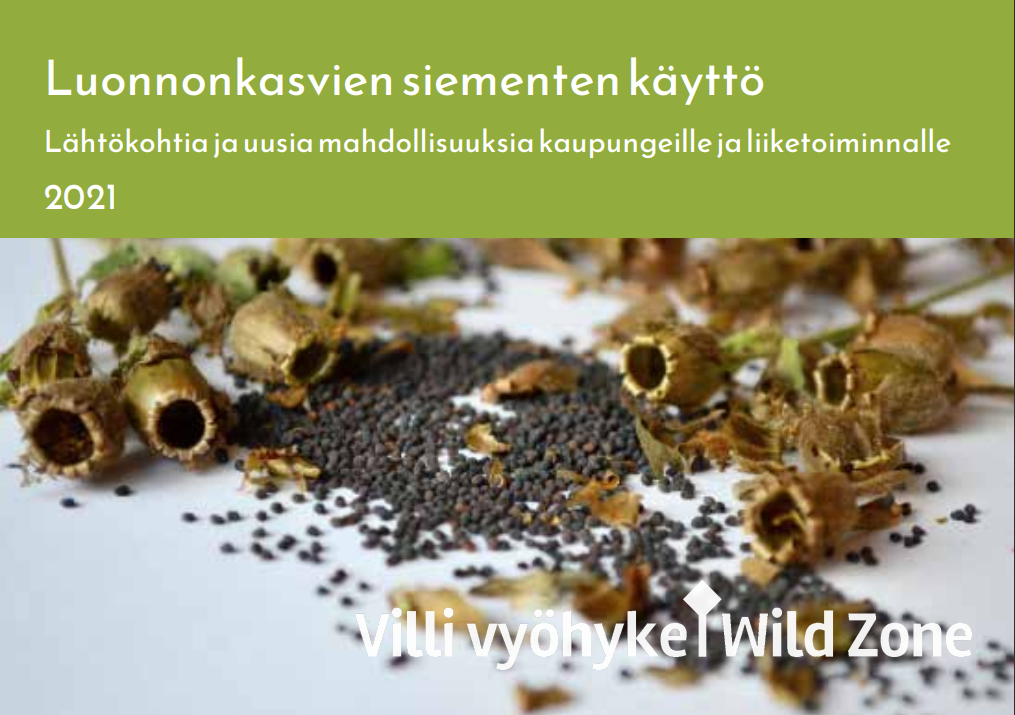Gathering seeds
The first stage of gathering seeds from wild populations is mapping the local flora. Often, literature and nature surveys concerning urban areas already exist and can be utilized – however, it's worth taking into account that plant populations might well not be in the same spot they have been a few years ago.
When gathering native seeds, it's necessary to identify plant species with certainty, assess when the seeds are ripe enough, and do follow-up visits throughout the growth season; mapping the populations beforehand is essential. Most plant species seeds should be collected when most of the seeds are ripe.
The ripeness of the seed is indicated by the change in the colour of the fruit and the seed; often, the fruit opens up, and the seeds become harder and detach themselves from the plant. Some plant species seeds can be collected when raw, and ripened in storage.
Usually, in order to get enough seeds, the wild populations need to be quite large. Only a small percentage of seeds in a wild population can be gathered, so that the population is not threatened. Also, any wild population should not be used as a seed source every year.
Collecting seeds from protected plant species requires a permission from environmental authorities. When collecting seeds from small populations, rare species, or endangered species, particular care must be taken in order to not harm the population.
Annual and biannual plant species rely almost completely on their seed production for survival. Because of this, it's recommended that only a maximum 5–10% of the seeds of annual and biannual species are collected at maximum.
The vitality of wild plant populations can be improved by doing some habitat management while collecting seeds. Overgrowth can be managed by removing woody plants, and invasive species should be weeded out. Often, rare plants are weak competitors, so ensuring their survival may also mean weeding out some very common local plants. Wild populations can also be expanded by collecting seeds and sowing them, or by planting saplings.
Often, wild populations don't provide a lot of seeds. The number of seeds can be increased by collecting seeds from established meadows – however, the origin of the populations must be known. If the goal is to cherish biodiversity, then seeds from an established meadow of unknown origin should not be used.
